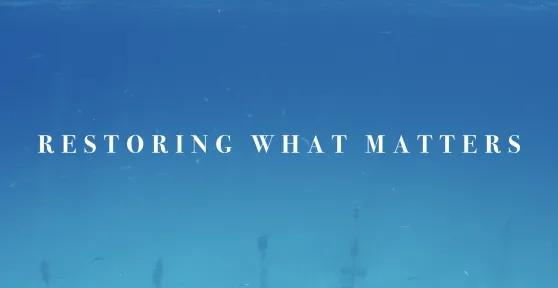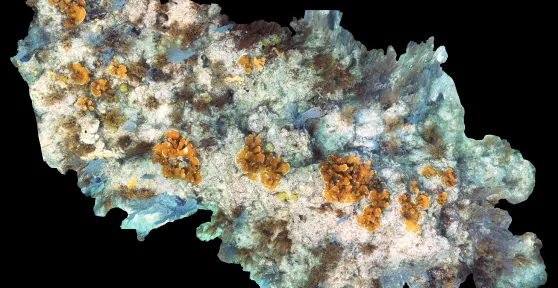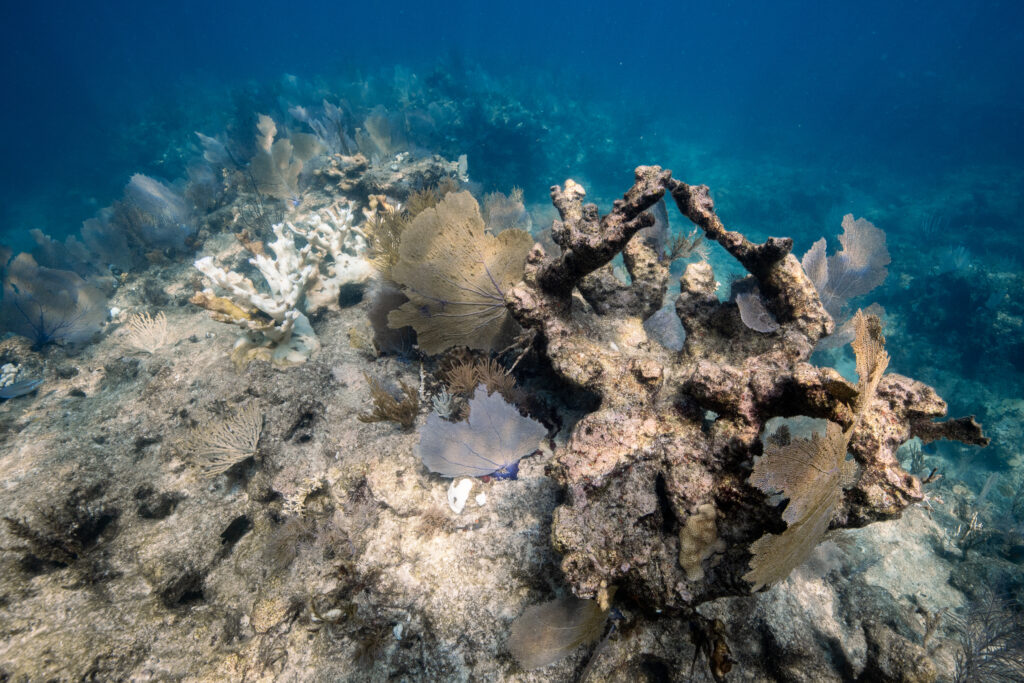
A new research paper published in Science reports the functional extinction of Acropora corals from Florida’s Coral Reef. Scientists documented catastrophic mortality of these critically endangered corals following a record-setting marine heatwave in 2023 that marked the ninth mass bleaching event for the region. Both Acropora coral species—staghorn (Acropora cervicornis) and elkhorn (Acropora palmata)—are important reef-builders in Florida and the Caribbean and have been a major focus of recent coral restoration efforts.
Led by the National Oceanic and Atmospheric Administration’s Coral Reef Watch and Chicago’s Shedd Aquarium, the study involved 47 authors representing 22 institutions including Coral Restoration Foundation, that contributed data detailing the coral die-off. While some individual elkhorn and staghorn corals remain, their numbers are now so low that they can no longer fulfill their vital roles in the ecosystem—providing habitat for marine life and helping protect coastlines. This collapse of ecological function marks what scientists call a functional extinction—a stage that often precedes global extinction or the complete disappearance of species.
While most other coral species in Florida did not suffer losses as extreme as the more heat-sensitive Acropora, the loss of these species deals a devastating blow to the ecosystem and stands as a stark warning for the future of coral reefs worldwide.
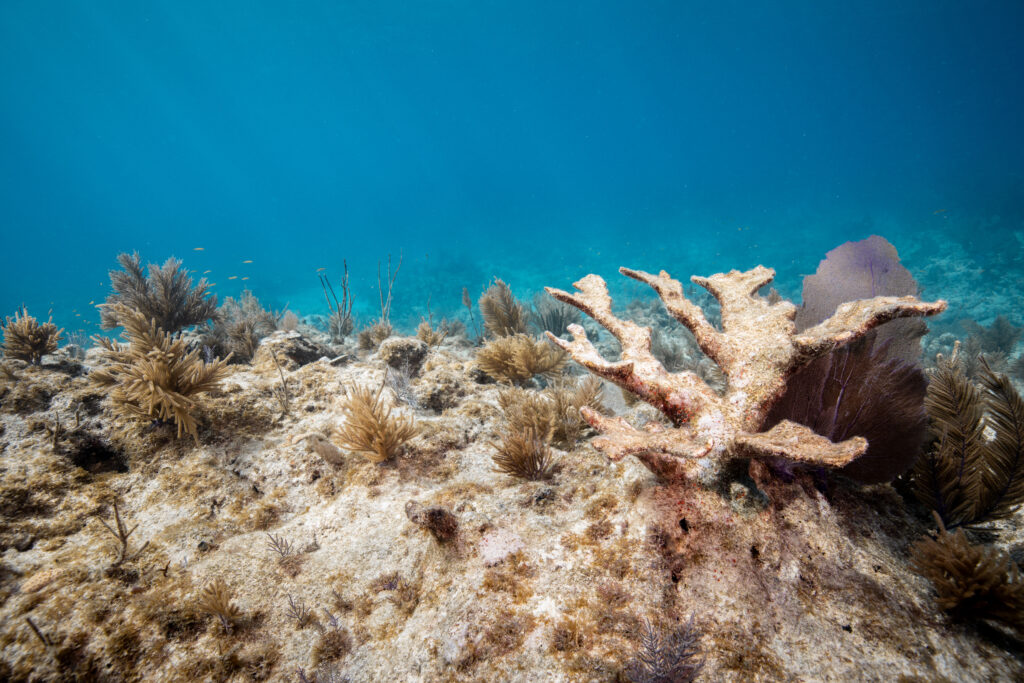
“We’re running out of time,” said Dr. Ross Cunning, a research biologist at Shedd Aquarium and co–first author on the study. “Extreme heatwaves are increasing in frequency and severity due to climate change, and without immediate, ambitious actions to slow ocean warming and boost coral resilience, we risk the extinction of even more corals from reefs in Florida and around the world.”
The study documents that the temperatures reached during the 2023 heatwave were the highest ever recorded on Florida’s Coral Reef in over 150 years, and that the heat stress persisted for 2–3 months. Heat exposure levels were 2.2 to 4 times greater than in any previous year on record.
As the heatwave and mass bleaching event unfolded, the team of researchers conducted diver surveys to track more than 52,000 colonies of staghorn and elkhorn coral across 391 sites. In the Florida Keys and Dry Tortugas (almost 70 miles west of Key West), mortality rates reached a staggering 98–100%. Mortality rates were lower offshore in southeast Florida, at around 38%, reflecting cooler temperatures in the region.
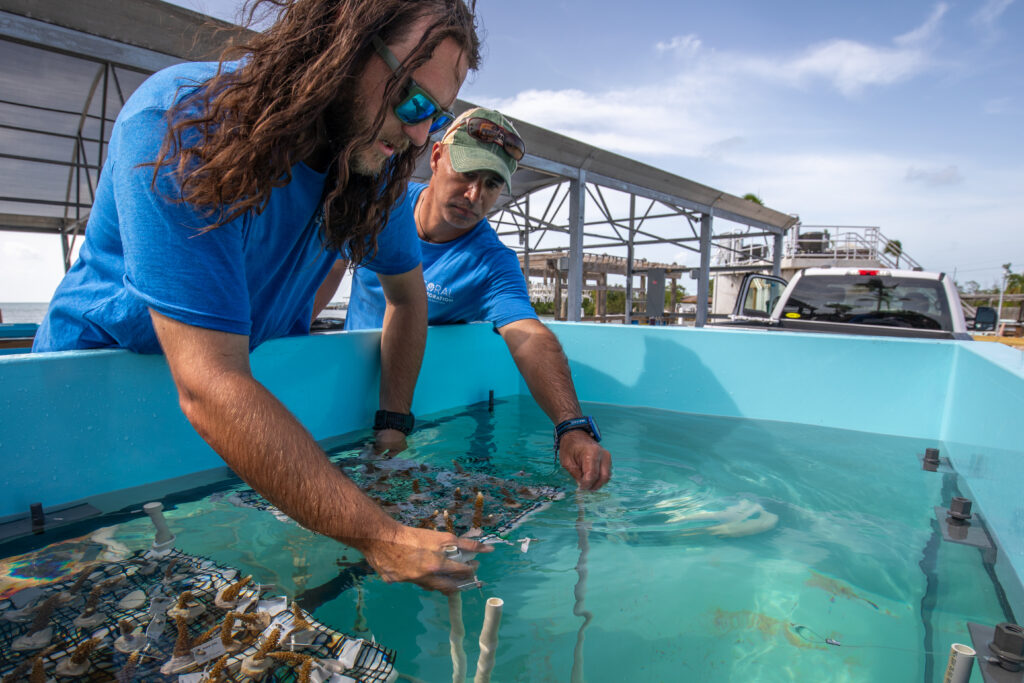
These two species of coral were already in decline due to decades of disease, poor water quality, previous bleaching events, and other human-driven stressors, but the 2023 marine heatwave accelerated the near-total collapse of staghorn and elkhorn corals on the reefs in this region. The population is unlikely to rebound without conservation interventions because of low numbers, continued warming, and additional stressors.
“The data is a sobering reminder of how fast climate change is reshaping our oceans, but it also shows why taking local action is more critical than ever,” said Dr. Phanor Montoya-Maya, Restoration Program Manager at Coral Restoration Foundation and contributing author on the study. “By reducing local stressors like pollution and overfishing, and by continuing to restore populations of staghorn and elkhorn corals, we can give these ecosystems the best possible chance to recover. In our ocean-based Coral Tree nurseries, we’ve also seen strong growth and even large-scale spawning this year — proof that these species still have the capacity to thrive in the wild when given the chance.”
Despite the unprecedented impact of the Fourth Global Bleaching Event, the destruction wrought by Hurricane Irma in 2017, and unrelenting local pressures, restoration efforts in Florida by CRF and others have saved Acroporids, and these reef ecosystems in general, from complete local extinction.
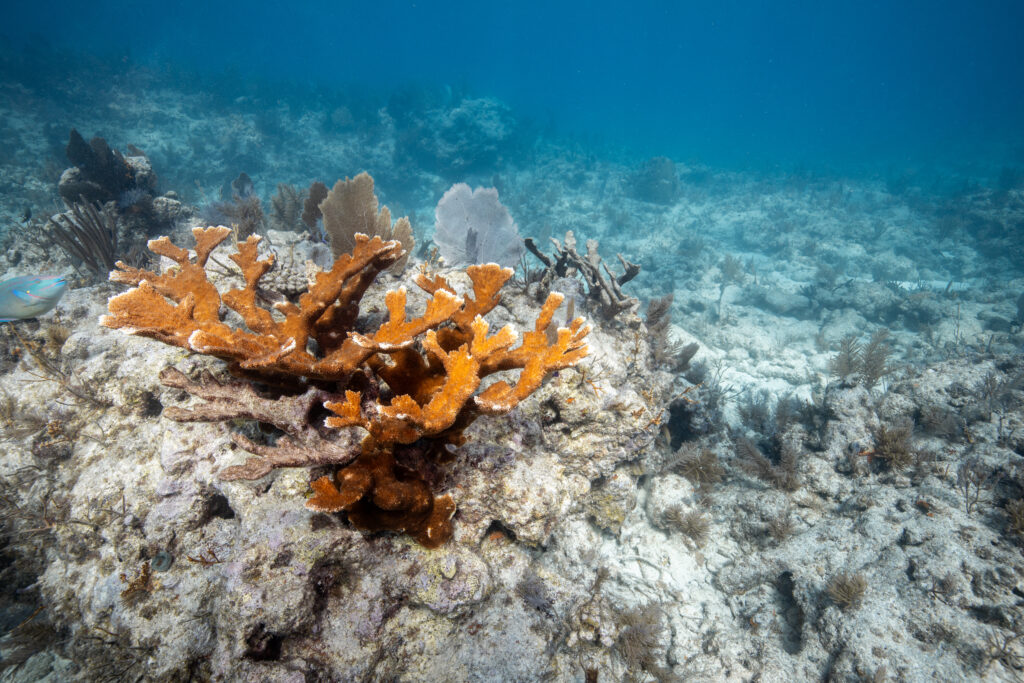
“The good news is that overall coral cover across Floridian reefs does appear relatively stable, thanks to restoration work. But the species composition has now shifted significantly,” says Montoya-Maya, “Fast-growing species like Acropora are now dramatically less common, while smaller, more resilient species, sometimes referred to as “sprinkle species”, have become more dominant. In the context of CRF restoration plots, we can confidently say that our efforts have contributed to maintaining coral cover over time.”
What Happens Next
Scientists from multiple organizations, including CRF, have already established living repositories to safeguard remaining Acropora in aquarium facilities on land and in offshore coral nurseries, and have rescued more of the survivors of the 2023 heatwave to bolster these collections. Under expert care, corals in these “gene banks” can continue to grow, supporting further research and restoration efforts for the species. Yet, the authors caution that the success of restoration will ultimately depend on the return time and severity of future bleaching events.
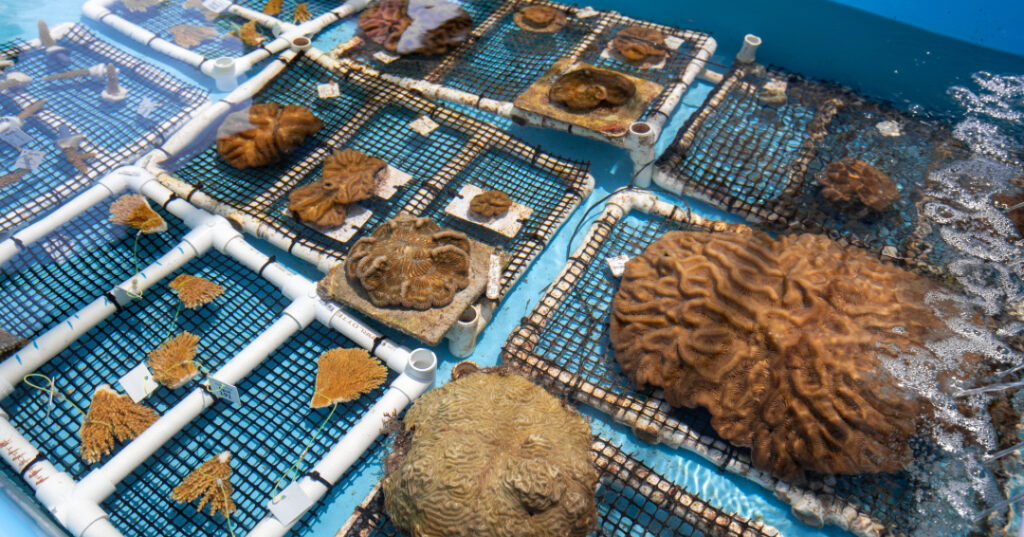
To secure a future for these species, restoration efforts must also incorporate new, adaptive interventions. Introducing resilient genetic diversity from outside Florida or manipulating the types of symbiotic algae that help corals tolerate heat may be the only means to maintain any Acropora populations in Florida.
Ultimately, the study underscores that ocean warming from climate change is now surpassing the thermal limits of entire populations of corals. Alongside bold, science-based actions to enhance coral resilience, urgent global action to slow climate change is essential to prevent the collapse of these critical reef ecosystems.
The research paper is available here.
BACKGROUND ON CORALS: These tiny animals are the building blocks of coral reefs, colorful structures which support 25% of ocean life. In addition to supporting marine life, coral provides food and income for hundreds of millions of people. Corals produce our sandy white beaches and protect our shores from up to 90 percent of potentially damaging waves and flooding. The benefits that coral reefs provide us are estimated to be worth $10 trillion per year globally.
About Coral Restoration Foundation™
The Coral Restoration Foundation™ (CRF™) is the world’s largest nonprofit organization dedicated to restoring coral reefs. Based in the Florida Keys, CRF™ develops and implements large-scale, science-based strategies to grow, outplant, and monitor corals, pioneering techniques now used around the world. By combining cutting-edge innovation, hands-on restoration, and global collaboration, CRF™ empowers communities and practitioners everywhere to help secure a future for these vital ecosystems.
Written by: Alice Granger
